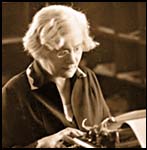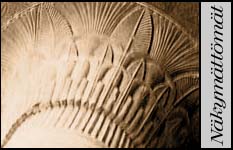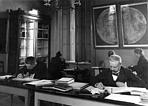




WOMEN OF LEARNING: NAME INDEX | DISCIPLINES | PERIODS | FIRSTS | THE INVISIBLE
LANDMARKS | FACTS | WOMEN'S STUDIES | FRONT PAGE

 |
Hjalmar Tallqvist, professor of physics: "There have been no great geniuses among women working in astronomy [...] but instead, they have shown themselves to be good and diligent workers in the great building of science. The genius cannot create evolution by itself, but the conscientious toiling with the lesser details is just as important. [...] That [astronomical work] has had a specific attraction for women seems to lie as well in the nature of astronomy as in the nature of women." Kvinnorna i vetenskapen: astronomi, matematik, fysik, radiologi (Helsingfors: Söderströms, 1932).  The University of Helsinki observatory participated in 1892-1930 in the large international Carte du Ciel project to chart the sky with the new photographic means. The Helsinki share of the programme consisted of some 120 000 stars. It was a huge and work intensive undertaking. The professor of astronomy at Helsinki, Anders Donner, imported the idea of using women computers. As many as nineteen diligent women women were employed in measuring and computing tasks. After a while, two of the women were doing some of the more complicated calculations along with male assistants. Among the women computers, Nanny Helin's career was the longest. She worked at the observatory for 37 years, and towards the end, all plates were measured by her. According to Donner's overview, written in 1916, women were responsible for some 72 percent of the whole workload of the Helsinki part of the astrophotographic project until then. The tradition of women computers was later followed by "planet girls" in Turku. Also other physical and natural sciences needed women's invisible input - there were women doing field work in e.g. biology. Eva Isaksson 
Working with the catalogue: in front, astronomers Wessel and Furuhjelm, back, assistants O. Sederholm, M. Biese, Nanny Helin. Read more: Eva Isaksson: Not a heavenly view. Women in the Helsinki Carte du Ciel project, 1893-1930. |
 |